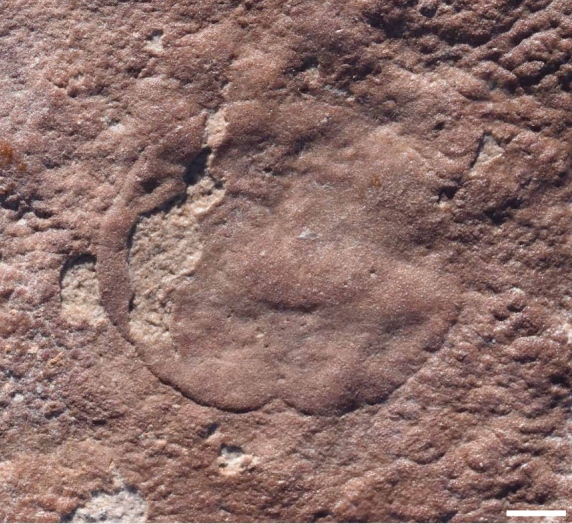In the Ediacaran Hills, researchers have found one of the first moving animals – and an even more distinctive feature is a question-mark-shaped ridge that makes this the oldest known animal to show left-right asymmetry (in other words, to not be a mirror reflection of itself).
The first animals appeared in the fossil record during the Ediacaran period (named after the hills) around 575 million years ago. They lacked the staggering complexity that emerged in the Cambrian period, but the ecosystems we have found from this time show remarkable diversity. Nevertheless, the newly discovered species that has been named Quaestio simpsonorum is unique.
Quaestio has not shown up before at any of the sites where paleontologists have spent decades exploring for animals – but at Nilpena Ediacara National Park a team found 14 specimens, albeit some barely preserved.
“A lot of organisms of the time were circular,” study co-author Dr Diego Garcia-Bellido of the South Australian Museum told IFLScience. “It optimizes the maximum volume for surface area.” Quaestio almost stuck to that plan, but added an odd, question-mark-shaped twist in the form of a ridge on its back. As Garcia-Bellido admits; “We don’t know what the ridge’s [evolutionary] advantage was.”

One of the fossils of Quaestio simpsonorum from the Ediacaran hills. The ridge looks like it could just be a bump in the underlying terrain, but is seen in all examples.
Image Credit: Evans et al/Evolution and Development, Courtesy of Dr Diego Garcia-Bellido
Lifeforms from the era are known as the Ediacaran Biota, which Garcia-Bellido said is because we usually don’t know for sure if they are animals or something else. “Maybe 5-10 percent we can say with confidence are animals,” he added. One way to confirm animal status is if we can prove the capacity to move of their own accord, which has been done for only a handful of species from the era.
“One of the most exciting moments when excavating the bed where we found many Quaestio was when we flipped over a rock, brushed it off, and spotted what was obviously a trace fossil behind a Quaestio specimen– a clear sign that the organism was motile; it could move,” said study co-author and Harvard PhD student Ian Hughes in a statement.
However, finding the track of this Quaestio’s migration does not mean we know how it got around. There are no signs of legs, for example. Garcia-Bellido told IFLScience there is no fossil evidence to settle the matter, but based on observations of living species, there are two possibilities. Either it contracted and expanded its muscles like a worm, or it used cilia: tiny hairs with which microorganisms beat the water to get around. At a diameter averaging 55 mm (2.2 inches), either is plausible.
It is thought Quaestio moved over the microbial mats that were common at the time, hoovering up food in a manner the researchers compared to a Roomba. Most other animals of the era are thought to have got their nutrition like modern bivalves, drawing in waters rich in organic particles. The mats were probably a denser source of nutrients, creating an incentive to move even before predators were a thing,
Most animals have very different fronts and backs, but their left and right sides usually look identical, so it might seem Quaestio was an evolutionary dead end. However, Garcia-Bellido noted to IFLScience that, internally, humans are asymmetrical, as evidenced by a heartbeat on our left side and most people’s preference for one hand over the other. Consequently, Quaestio may have been a pioneer instead.
“Because animals today use the same basic genetic programming to form distinct left and right sides, we can be reasonably confident those same genes were operating to produce these features in Quaestio, an animal that has been extinct for more than half-a-billion years.” Dr Scott Evans Evans said.
That said, Garcia-Bellido told IFLScience that all we really know about Quaestio is the shape of its outsides; no examples have been found where the internal structure has been preserved.
The genus name for the new discovery has an obvious inspiration, while the species name honors Mary Lou and Antony Simpson, who established the Flinders Ranges Ediacara Foundation, which has provided funding for work in the area.
The study is published in the journal Evolution and Development.
Source Link: One Of The Earliest Moving Animals Had A Very Quizzical Shape